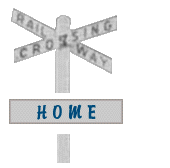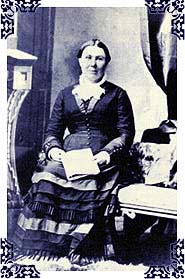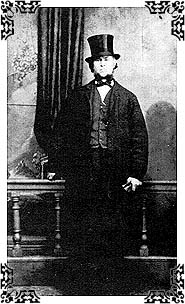








During the early days on the Island, the art of making clothes remained in the home. Many women would make clothing for their family by stitching together woven cloth or by spinning wool and knitting sweaters, socks, and other garments. As the Industrial Revolution progressed at the opening of the nineteenth century, textile plants were constructed in England and elsewhere that could rapidly churn out spools of cheap material, in a whole spectrum of colors produced by chemical dyes. With the middle class now able to afford a wardrobe, the need for tailors and dressmakers grew.
 The
tailoring trade has a long tradition in Kensington, as
both John Noonan and A. J. Phelan were both based in
Barrett's Cross as early as 1833. As more settlers
arrived, the need for clothing increased, especially as
new arrivals prepared to shield themselves against the
harsh winter weather. Hugh MacLeod (1840) and William
Carruthers (1860) also set themselves up as tailors in
town.
The
tailoring trade has a long tradition in Kensington, as
both John Noonan and A. J. Phelan were both based in
Barrett's Cross as early as 1833. As more settlers
arrived, the need for clothing increased, especially as
new arrivals prepared to shield themselves against the
harsh winter weather. Hugh MacLeod (1840) and William
Carruthers (1860) also set themselves up as tailors in
town.
When Reuben
Tuplin began his mercantile
establishment in Margate in 1855, his wife Harriet
immediately recognized opportunities in the clothing
business. As fully ambitious in commercial dealings as
her husband, Harriet spearheaded the development of
tailor and shoemaking
operations in the Margate store. When it was determined
in 1875 that the railway would
bypass Margate, however, the Tuplins
decided to move their business to Kensington, whose railroad station
had made it the new commercial destination for the area.
With new fashions and materials constantly arriving via
the train, it was said that the Tuplin store could keep
Kensington citizens outfitted according to the latest
London fashions. As you can see from these pictures,
Reuben and Harriet were no strangers to fashion
themselves, and many of the trends of Kensington's
merchant set were  no doubt set by
the beaver hats and fancy frocks the Tuplins wore back
from their latest foray to London. When their
establishment burned to the ground in 1889, they
immediately rebuilt, and expanded to include a millinary
(hat-making) shop and a dress-making shop. Miss Jane
Profitt ran the profitable dress-making business, which
instructed many young women and provided them with one of
the only avenues for employment that existed at the time.
no doubt set by
the beaver hats and fancy frocks the Tuplins wore back
from their latest foray to London. When their
establishment burned to the ground in 1889, they
immediately rebuilt, and expanded to include a millinary
(hat-making) shop and a dress-making shop. Miss Jane
Profitt ran the profitable dress-making business, which
instructed many young women and provided them with one of
the only avenues for employment that existed at the time.
As the nineteenth century progressed, the manufacture of clothing became the norm, and dressmakers and tailors played a diminishing role in the production of day-to-day outfits. But many continued-- and still continue-- to prefer the quality and craftsmanship of perfectly tailored clothing. To this day, there are many local women who make beautiful clothes, creating wedding and prom dresses to lend a sense of individuality and style. Also, as the need for tailors and dressmakers decreased, the need for ready-to-wear clothing stores arose. Preston Toombs, Gordon Cooke, Al Bickerton and Fred MacEwen all had clothing stores in Kensington. Today, this tradition continues at the Kensington Clothing Company outlet on Broadway Street, which creates original designs suited to the local lifestyle.
Blacksmith | Shoemaker | Livery Stable | Herbert R. Moase, Tradesman